Oil In Infant Formula
64 hours of research 6 minute read

For infants and young children, fat is an essential macronutrient. It is crucial for the period of rapid growth that occurs after birth, for the delivery of fat-soluble vitamins (such A, D, E, and K), and to support brain and neurological development.
Baby formula may contain various types of oils, including vegetable oils (such as soybean, sunflower, and safflower oil), palm oil, coconut oil, and fish oil, which are added to provide essential fatty acids and improve absorption of fat-soluble vitamins. However, some types of oils, such as palm oil, have been associated with potential health risks, and the type and amount of oils in baby formula may vary depending on the brand and formulation.
Fat Sources in Baby Formula & Breast Milk
The majority of organic formulas are made with the intention of producing a natural product that is as similar to breastmilk as possible. It is created using components that can offer a comparable composition of proteins, carbs, fats, and vitamins and minerals. Both breastfeeding and formula include about 50% of their calories from fat. This fat serves as a source of energy and aids in the assimilation of vitamins and minerals.
Vegetable oils are often used as the main source of fatty acids in infant formulas. The most prevalent vegetable oils used in infant formula are palm, sunflower, safflower, and rapeseed oils, while soy and coconut oils are typically included. Interesting enough, kids are naturally able to digest a wide variety of fatty acids, even if the mix varies somewhat from day to day, because the composition of fatty acids in breast milk depends on the mother's diet. Oleic, palmitic, linoleic, and stearic acids are the most abundant fatty acids in breast milk.
Sunflower Oil in Baby Formula

Why is there sunflower oil in baby formula? Sunflower oil is pressed from sunflower seeds. Sunflower oil is often included in baby formula because it is a good source of essential fatty acids, particularly linoleic acid, which is important for infant growth and development. Sunflower oil is also easily digestible and may improve the absorption of fat-soluble vitamins, such as vitamin D and vitamin E. Additionally, sunflower oil is less likely to cause allergic reactions compared to other oils, such as soybean oil, which is another common oil used in baby formula.
Rapeseed Oil in Baby Formulas

Why is there rapeseed oil in baby formula? Rapeseed oil, also known as canola oil, is often included in baby formula because it is a good source of essential fatty acids, particularly alpha-linolenic acid (ALA), which is important for infant growth and development. ALA is a precursor to long-chain polyunsaturated fatty acids (PUFAs) such as DHA and EPA, which are important for brain and eye development. Rapeseed oil is also a good source of monounsaturated fatty acids, which may have health benefits such as reducing the risk of cardiovascular disease. Additionally, rapeseed oil has a mild flavor and is easily digestible, making it a suitable oil for use in infant formula.
Since rapeseed oil has a high nutritional value in comparison to other edible oils, it is frequently utilized in infant and follow-on formula. It has high concentrations of omega-3 fatty acids and alpha-linolenic acid, both of which are crucial for human health, and low concentrations of saturated fatty acids.
Formula that contains sunflower and rapeseed oil
Holle Goat uses organic sunflower oil and organic rapeseed oil as fat sources, in addition to full cream organic goat’s milk powder.
Check PriceSoy Oil in Baby Formula

Why is there soy oil in baby formula? Soy oil is often included in baby formula because it is a good source of essential fatty acids, particularly linoleic acid, which is important for infant growth and development. Soy oil is also rich in vitamin E, which is an antioxidant that helps protect cells from damage. Soybeans can be used in baby formulae as an emulsifier, a source of protein and fat (using soy protein isolate and soybean oil, respectively), or both (using soy lecithin). Additionally, soy oil is relatively inexpensive compared to other oils, making it a cost-effective option for use in infant formula. However, some infants may be allergic to soy protein or may experience digestive issues when consuming soy-based formula, so it's important for parents to consult with their healthcare provider before using soy-based formula.
Most infant formulas, including those produced in the US, Europe, and other parts of the world, contain soy oil as one of their principal ingredients. The top manufacturers of organic infant formula actually utilize soy oil. While Organic Life Start European formulas are free of soybean oil, soy oil can be used in infant formulae as long as it comes from organically grown soy. In their vegetable oil blend, several reputable brands of organic formula, including Kabrita, include organic soy oil.
Most Popular Soy-Free Baby Formulas
Coconut Oil in Baby Formula

Why is there coconut oil in baby formula? Coconut oil is sometimes included in baby formula because it is a rich source of medium-chain triglycerides (MCTs), which are easily digestible and can be used by the body for energy. MCTs are also believed to have antimicrobial and anti-inflammatory properties, which may benefit the immune system. However, coconut oil is not a major source of essential fatty acids and does not provide the same nutritional benefits as other oils commonly used in baby formula, such as sunflower and soybean oil. Therefore, it is not typically used as the sole source of fat in baby formula, but may be included in small amounts to provide additional benefits.
Coconut oil is another source of fatty acids utilized in European baby formula. This oil is made from coconut "meat", also referred to as the kernel. Only fully developed coconut fruits that are plucked from the palm tree can be used to extract oil. Coconut oil has a long shelf life without going bad since it is strong in saturated fat and resistant to rancidification.
Coconut Oil Facts
For European baby formula brands like Kendamil, the use of organic, ecological, and sustainable farming is crucial in every way. The use of coconut oil as a healthy fat that resembles breast milk ensures that your child receives only the greatest nutrition.
To ensure the protection of indigenous plants and animals, European regulations require that all coconut oil be supplied from regions that have received a biodiversity certification. Coconuts are collected by hand rather than by a huge tractor, which is excellent for the environment and the local economy. Pesticides and herbicides are never required.
Coconut oil is well known for its therapeutic benefits, which include promoting healthy cholesterol levels and reducing the risk of cardiovascular ailments.
Lauric acid with 12 carbons, which is abundant in coconut oil, breaks down to generate a substance called monolaurin. In the short term, these compounds can aid the body in getting rid of harmful diseases like viruses and bacteria. They are known to improve brain function over the long run and may shield against diseases like Alzheimer's.
Concerns about Coconut Oil
The biggest criticism of coconut oil is that it contains a lot of saturated fat. Concerns regarding long-term health effects plague parents and other caregivers.
Another issue is the deforestation caused by the manufacture of coconut oil. The potential impacts on threatened plant and animal species in and surrounding growth areas have been highlighted by fresh evidence.
Formula with Coconut Oil
✓ No palm oil, no soy, no maltodextrin
✓ Contains DHA & ALA
✓ Natural Prebiotics
✓ Available in 3 age-specific stages
Check Price-
Why Kendamil?
- Organic whole milk
- EU Certified Organic
- No maltodextrin or starch, GMO-free, Soy oil free, Palm oil free
- Contains HMOs and naturally occuring MFGM
- Prebiotic (GOS), ARA, plant-based DHA, essential vitamins and minerals
- Vegetarian friendly
- Appropriate for birth onwards
- Shelf-stable
Palm Oil in Baby Formula

Why is there palm oil in baby formula? Palm oil is sometimes included in baby formula because it is a good source of saturated and unsaturated fatty acids, which are important for infant growth and development. Additionally, palm oil is relatively stable at high temperatures, which makes it suitable for use in processing and manufacturing. Some studies have suggested that the high levels of palmitic acid in palm oil may reduce the absorption of calcium and other minerals, which is why most of these formulas contain fortified levels of calcium and minerals.
Palmitic acid, which makes up around 25% of the fatty acid composition of breast milk, can be found in palm oil, also known as palm olein oil. Because of this, palm oil is a common ingredient in formulations. Palm oil is a dietary source of palmitic, oleic, and linoleic acids as well as a good source of vitamins A and E. There is also some evidence to suggest that palm oil may support healthy cholesterol levels.
Palm Oil Facts
All facets of newborn nutrition, including nutrient absorption, are carefully taken into consideration by European baby formula manufacturers.
Manufacturers of European baby formulas make extra calcium additions during processing to offset the effects of palm oil. Prebiotics and probiotics, which regulate gut flora and significantly improve nutrition absorption for all nutrients, including calcium, are another benefit of brands like HiPP Dutch.
Additionally, according to recent studies, the palm oil in your baby's formula won't have a long-term negative impact on calcium levels or bone density. Manufacturers of baby formula in Europe go above and above to guarantee.
Well-known European manufacturers of infant formula, such HiPP and Holle, only use organic palm oil that comes from sources that are both environmentally friendly and socially responsible. where there is no deforestation of the rainforest, produced organically to safeguard the rainforests and biodiversity.
Concerns about Palm Oil
According to studies, palm oil can interfere with the absorption of some minerals, including calcium. Parents frequently worry that their children may lose these nutrients and their growth will be stunted.
The environmental impact of palm oil after sourcing is a significant issue as well. There is no sustainable or ethical way to farm or utilize palm oil in European baby formulas, as it is generally recognized that a large portion of the world's palm oil is produced using agricultural practices that harm ecosystems and biodiversity.
Formula with Palm Oil
✓Contains Probiotics & Prebiotics
✓ No sugar, no corn syrup, no soy
✓ No starch
✓ HiPP's most popular formula
Check Price-
Why choose HiPP Dutch
- Organic skim milk
- No starch, no gluten, and no maltodextrin
- No synthetic preservatives or nutrients
- Prebiotics, probiotics, Omega 3 & 6 and DHA
- Essential vitamins and nutrients
- Organic lactic acid bacteria cultures (similar to breast milk)
- Certified organic to European standards (which are stricter than in the US)
- GMO-free
- Shelf-stable
2. HiPP Comfort
✓Contains Probiotics & Prebiotics
✓ No sugar, no corn syrup, no soy
✓ Reduced lactose with hydrolyzed milk protein
✓ Easy to digest formula for sensitive babies
Check Price-
Why choose HiPP Comfort
- Proteins are hydrolyzed (broken into fragments) for easier digestion
- Omega 3 & 6 LCPs
- Appropriate for all ages starting at 0 months
- Prebiotics and Probiotics
- GMO-free
- Shelf-stable
Palmitic Acid from Palm Oil vs Palmitic Acid from Breast Milk
Although both breast milk and palm oil are sources of palmitic acid, breast milk triglycerides and palm oil triglycerides have somewhat different molecular structures. How these triglycerides are broken down by an infant's digestive system is the main effect of this variation. In essence, breast milk contains palmitic acid, which is more readily absorbed by the body. In a baby's intestines, where it "floats," palmitic acid from palm oil can bond to calcium molecules to create calcium soaps. These soaps don't cause any harm or risk; rather, they just show that some calcium and palmitic acid aren't being absorbed. As part of regular bowel movement, the body expels the unabsorbed calcium and palmitic acid.
All fatty acids, including palmitic acid from palm oil, are easily digested by the vast majority of infants. The development of calcium soaps, however, has the potential to result in tougher stools or constipation for some infants with extremely sensitive digestive systems, notably those born early. As a result, soft, simple-to-digest solutions like HiPP Comfort use fat blends containing beta-palmitate, a triglyceride whose more absorbable palmitic acid won't prevent calcium absorption or result in the production of calcium soaps. Additionally, the hydrolyzed protein in HiPP Comfort is 100% whey, which will soften your baby's stools and is frequently advised for treating constipation.
Coconut Oil vs Palm Oil
For a child's development, fatty acids are crucial nutrients. Both coconut oil and palm oil have advantages and downsides when used in cooking. Here are a few differences that stand out. Vitamins A and E are abundant in palm oil, while coconut oil is better absorbed by the body and does not require additional calcium. Coconut oil is more widely accessible while palm oil is more inexpensive. Both have ecological benefits and drawbacks, but they can be farmed organically and biodiversity as needed to preserve the environment and boost the local economy.
It is based on research that the inclusion of palm and coconut oils in European baby formula contributes to the creation of the ideal ratio of fat, protein, minerals, and carbs required to support your child's growth and development.
Baby Formula Oil Ingredients Comparison
| Formula | Oil Ingredients |
|---|---|
| HiPP Dutch | Palm Oil, Rapeseed Oil, Sunflower Oil |
| HiPP German | Palm Oil, Rapeseed Oil, Sunflower Oil |
| HiPP UK | Palm Oil, Rapeseed Oil, Sunflower Oil |
| HiPP Dutch Goat | Palm Oil, Rapeseed Oil, Sunflower Oil |
| HiPP HA | Palm Oil, Rapeseed Oil, Sunflower Oil |
| HiPP Dutch HA | Palm Oil, Rapeseed Oil, Sunflower Oil |
| HiPP Comfort | Palm Oil, Rapeseed Oil, Sunflower Oil |
| HiPP UK Comfort | Palm Oil, Rapeseed Oil, Sunflower Oil |
| HiPP AR | Palm Oil, Rapeseed Oil, Sunflower Oil |
| Hipp 1+ Years | Palm Oil, Rapeseed Oil, Sunflower Oil |
| Hipp 2+ Years | Palm Oil, Rapeseed Oil, Sunflower Oil |
| Holle Bio | Palm Oil, Rapeseed Oil, Sunflower Oil |
| Holle A2 | Palm Oil, Rapeseed Oil, Sunflower Oil |
| Holle Goat | Rapeseed Oil, Sunflower Oil |
| Holle Goat Dutch | Rapeseed Oil, Sunflower Oil |
| Lebenswert | Palm Oil, Rapeseed Oil, Sunflower Oil |
| Kendamil Classic | Coconut Oil, Rapeseed Oil, Sunflower Oil |
| Kendamil Organic | Coconut Oil, Rapeseed Oil, Sunflower Oil |
| Kendamil Goat | Coconut Oil, Rapeseed Oil, Sunflower Oil |
| Kabrita | Coconut Oil, Palm Oil, Rapeseed Oil, Sunflower Oil |
| Nannycare | Rapeseed Oil, Sunflower Oil |
| Aptamil Nutribiotik | Coconut Oil, Rapeseed Oil, Sunflower Oil |
| Aptamil Gold+ | Coconut Oil, Rapeseed Oil, Sunflower Oil |
| Aptamil Pepti | Coconut Oil, Palm Oil, Rapeseed Oil, Sunflower Oil |
| Aptamil Comfort | Coconut Oil, Palm Oil, Rapeseed Oil, Sunflower Oil |
| Aptamil Anti Reflux | Coconut Oil, Palm Oil, Rapeseed Oil, Sunflower Oil |
Oil in Baby Formula

When reading the labels of baby formula, it's important to consider the type and amount of oils included, especially those that provide essential fatty acids such as DHA and ARA, which are important for infant brain and eye development. Some commonly used oils in baby formula include vegetable oils like soybean, sunflower, and safflower oil, as well as palm oil and coconut oil. However, it's important to be aware that some oils, like palm oil, may have potential health risks and may be listed under different names on the label.
To encourage healthy development and growth, infants need to eat well. Due to its distinct composition and delivery of vital nutrients to promote infants' healthy growth and development, human milk is regarded as the gold standard for baby nutrition. As a result, the composition of human milk is frequently mimicked in infant formula formulation. It's crucial that the baby formula you select closely resembles the nutritional profile of human breast milk in order to discover the ideal nutrient-dense food source for a developing infant. Understanding the ingredients is the first step in your search for pure, healthy nutrition for your child.
Most Popular European Baby Formulas
Organic Life Start is committed to providing accurate, reliable, and trustworthy information to parents and caregivers. We carefully choose credible sources and follow a meticulous fact-checking process to uphold the highest standards in infant nutrition and parenting advice. To learn more about our dedication to accuracy, please explore our editorial guidelines.
Link To Sources
- https://www.sciencedirect.com/topics/agricultural-and-biological-sciences/infant-formula
- https://www.ncbi.nlm.nih.gov/pmc/articles/PMC7759907/
- https://journals.lww.com/jpgn/Fulltext/2019/05000/Palm_Oil_and_Beta_palmitate_in_Infant_Formula__A.28.aspx
- https://lipidworld.biomedcentral.com/articles/10.1186/s12944-017-0457-y


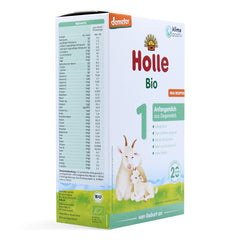
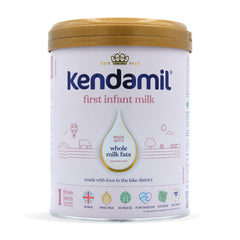
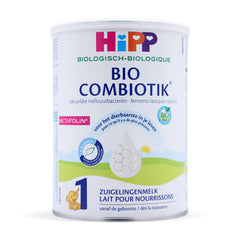
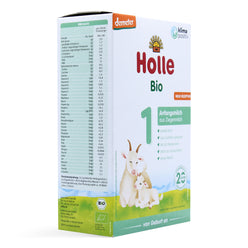
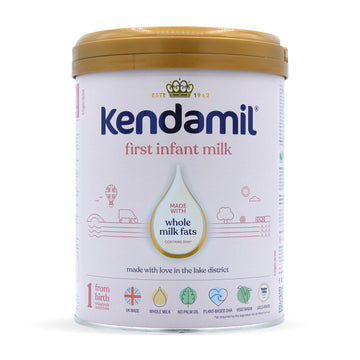








Beatrice -
I was surprised to learn that many baby formulas use vegetable oils as a fat source, like palm, soybean, or sunflower oil. While these oils help mimic the fat profile of breast milk, I became concerned about how they might affect my baby’s digestion and nutrient absorption. After some research, I found that certain European formulas use better-quality oils or even whole milk fats, which feel more natural and gentle. I switched to Kendamil, which uses whole milk fats and avoids palm oil, and noticed my baby had fewer tummy issues and better stools. Based on my experience, I recommend trying Kendamil or similar European formulas that focus on more wholesome fat sources.
Arielle -
This reminds me of when my baby Chelsie was going through major tummy troubles and constant gas. We ended up trying a formula that used palm oil, thinking it wouldn’t make a difference—but it definitely did, and not in a good way. His digestion got worse until we switched to one with friendlier fats like coconut and sunflower oil. The change was almost immediate—less gas, better sleep, and a much happier baby.
Valerie -
I had no idea that the type of oil used in formula could have such an impact on a baby’s digestion and nutrient absorption! This definitely makes me more mindful of what I choose for my little one. The breakdown in this guide helped me understand why some babies react differently to certain formulas. Super helpful and eye-opening.